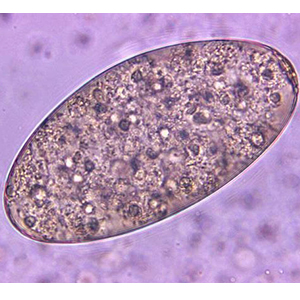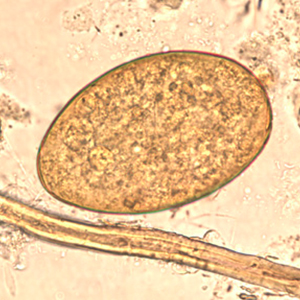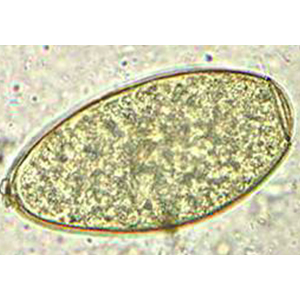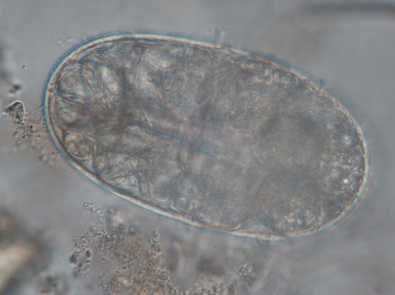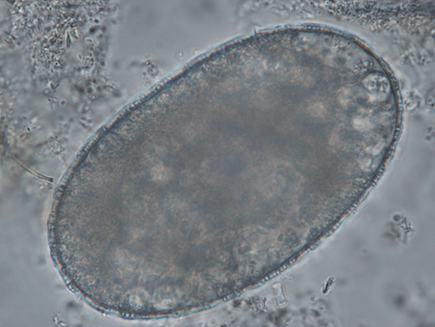Trematodes are non-segmented flatworms with circular muscular cavities in their holdfasts which resemble suckers and anchor them within their hosts. Several thousands of species of trematodes exist. In non-human primates, three species stand out: Fasciola hepatica, Fasciolopsis buski and Gastrodiscoides hominis.
Epidemiology
The three species of interest have different distributions. Fasciola hepatica is the most cosmopolitan one and can be found all over the world (Nyindo & Lukambagire, 2015). Gastrodiscoides hominis is more specific to tropical and subtropical regions (Strait et al., 2012). Captive animals are not frequently affected by trematodes, due to the complexity of the lifecycle of these parasites.
Description
Trematode eggs are large, ranging from 130 to 140 µm long and 80 to 85 µm large, and are operculated. Their content is granulomatous. It is impossible to differentiate the species of trematodes using ovodiagnosis (Garcia, 2021).
Differential diagnosis
Differential diagnosis includes mite eggs, which are of the same size approximately. In their immature states, they contain nutritive granules which could induce confusion with trematode eggs. However, they are normally more heterogeneous, with the center being darker than the periphery of the egg. In their mature form, mite embryos are clearly visible, and no confusion can be made (Petithory et al., 1995).
Clinical significance
Trematode infections may cause diarrhea and hyperthermia (Calle & Joslin, 2015). However, other clinical signs can be observed according to the species of trematode affecting the definitive host. It is important to consider that most trematode infections are zoonotic, although they require intermediate hosts and are not transmitted directly from non-human primates to humans.
Prophylaxis and treatment
Zoonotic risk of trematode infections from captive non-human primates to humans is very limited, as an intermediate host is required for transmission. However, hygiene measures are essential to avoid the transmission of the disease within a group of animals.
Praziquantel at a dose of 15 to 40 mg/kg PO or IM is the most commonly used treatment to treat trematodosis in non-human primates (Calle & Joslin, 2015).


